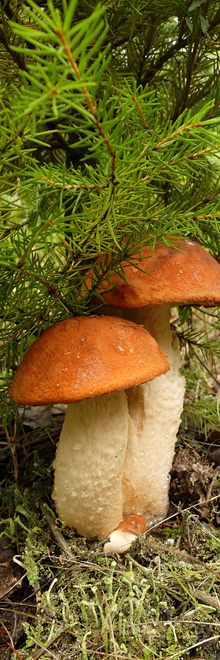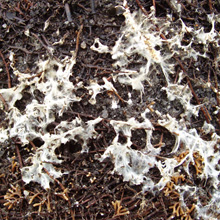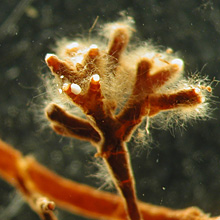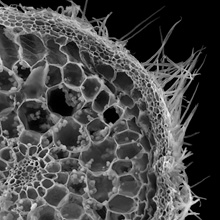Ectomycorrhiza
Ectomycorrhiza represents the second widely distributed type of mycorrhiza. This symbioses is developed between fungal species of the phyllum (Bazidiomycota) and roots of trees (mostly conifers).
Intraradical mycelium colonises intercellular space of root cells only. Extraradical mycelium forms dense hyphal sheath on the root surface and prevents formation of root hairs. On the other hand, the mycelium colonises the forest soil to larger extent than roots do. This widely spread mycelial system distinctly improves access of the tree to nutrients and water in soil. Typical structures resulting from the absence of root hairs can be easily observed on root tips. These structures are called ectomycorrhizal tips and their presence or absence on tree roots pose an evidence of ectomycorrhizal symbioses.
Apart from impro-vement of tree nutrition, ectomycorrhizal symbio-ses prevent trees from soil fungal pathogens. The mycelial system connects neighbouring trees and also enables water and nutrient flux among them. Last but not least, ectomycorrhiza is involved in protection of trees from inhibition of alellopathic compounds in soil.
Latest investigations showed that ecto-mycorrhizal mycelium is not limited to the upermost soil layers (organic horizon). Surprisingly high mycelial content and high fungal species diversity was determined in mineral soil horizon as well. No wonder, that another unbelievable fact was discovered - ectomycorrhizal fungi are also involved in rock weathering and mineral transformation. However, they are responsible only for up to 0,5 % of weathering. Therefore, their effect may be omitted compared to abiotic factors.



